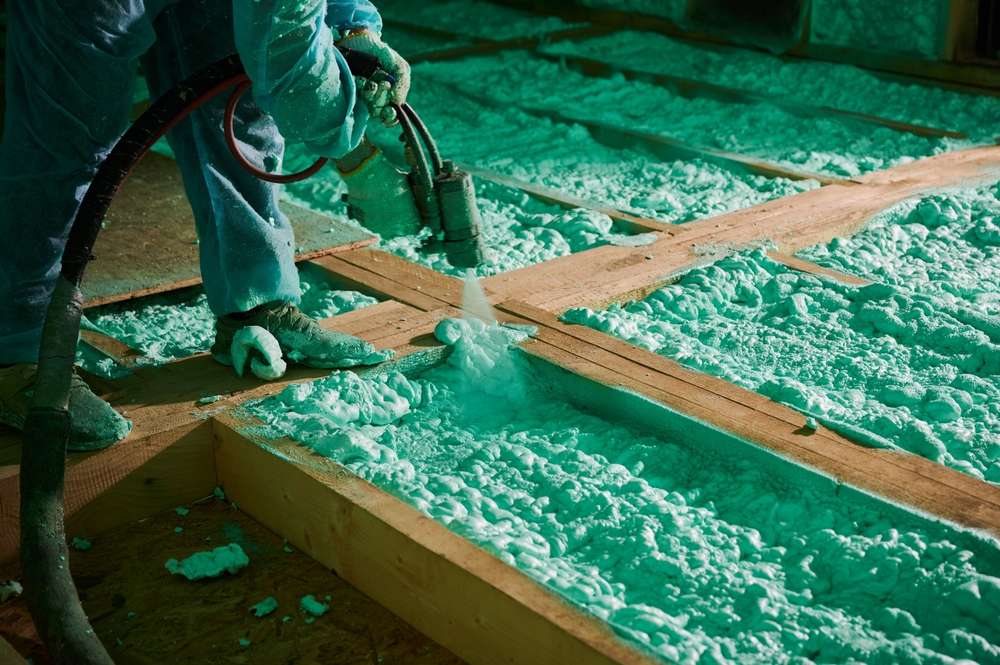Spray Foam Insulation: How It Improves Home Energy Efficiency
Spray foam insulation has become a go-to option for homeowners and builders aiming to boost comfort and reduce energy use. Applied as a liquid that expands to seal gaps and cavities, spray foam acts as both an insulator and an air barrier. This first look explains what spray foam does, how it compares to other insulation types, where it fits in construction and retrofits, and what to consider when hiring local services or planning an installation.

What is insulation and why it matters for homes
Insulation reduces heat flow between a home’s interior and exterior, helping maintain steady indoor temperatures. Effective insulation lowers the load on heating and cooling systems, which can improve comfort and reduce energy consumption. Unlike some batts or blown-in materials, spray foam forms a continuous barrier that seals cracks and penetrations where air leakage often occurs. For many homeowners this dual role—thermal resistance plus air sealing—translates to fewer drafts, more consistent rooms, and potentially lower utility bills compared with under-insulated homes.
How spray foam works compared with other types
Spray foam is applied as a liquid that expands and cures into a rigid or semi-rigid foam. There are two common types: open-cell and closed-cell. Open-cell is less dense and more flexible, while closed-cell is denser and offers higher resistance to moisture and airflow. Because spray foam adheres to surfaces and fills irregular spaces, it often outperforms loose-fill or batt insulation in stopping convective heat loss. That said, the right choice depends on climate, structural constraints, and budget — professional evaluation helps match the foam type to the project.
How spray foam fits into construction projects
In new construction, spray foam can be applied to framed walls, rooflines, and floors to create a continuous thermal envelope from the start. It simplifies meeting tighter energy codes and can reduce the need for additional air-sealing measures. In retrofit or renovation work, spray foam can be injected into wall cavities or applied to attic surfaces to improve performance without major demolition. Contractors typically coordinate foam installation with other trades to avoid trapping moisture or creating thermal bridges; proper sequencing and ventilation planning are important for long-term durability.
What spray foam does for energy efficiency
Spray foam boosts energy efficiency by reducing both conductive and convective heat transfer and limiting uncontrolled air movement. Closed-cell foam also provides some vapor control where moisture management is a concern. By tightening the building envelope, heating and cooling systems operate more efficiently and may cycle less frequently, which can extend equipment life. Energy savings vary with climate, home size, and existing insulation levels, but spray foam’s combination of insulation and air sealing is particularly effective in homes with many gaps, penetrations, or irregular framing details.
Choosing spray foam for your home: benefits and limits
Benefits include strong air sealing, high insulating performance per inch, and compatibility with complex spaces. Common limitations are higher material and installation cost compared with some alternatives, and the need for professional application to ensure proper mixing, thickness, and curing. Some installations require considerations for fire protection and trimming before finishes are applied. Homeowners should assess goals (comfort, moisture control, energy savings) and consult qualified installers and building professionals to determine whether spray foam is the best fit for their specific home and climate.
Installation safety, local services, and health considerations
Professional installers follow safety protocols: proper ventilation, personal protective equipment, and controlled curing times to minimize exposure during application. Homeowners should plan to vacate the work area per the contractor’s guidance until off-gassing subsides and surfaces are cured. For those with respiratory sensitivities, consult a medical professional before exposure. This article is for informational purposes only and should not be considered medical advice. Please consult a qualified healthcare professional for personalized guidance and treatment. When hiring, look for licensed contractors and check local services in your area for experience with the foam type you need.
Conclusion
Spray foam insulation offers a compelling combination of air sealing and thermal resistance that can improve comfort and energy efficiency in both new construction and retrofits. It’s a higher-investment option that can provide lasting performance when installed correctly, so weigh the benefits, limitations, and safety needs with qualified local services before proceeding.






